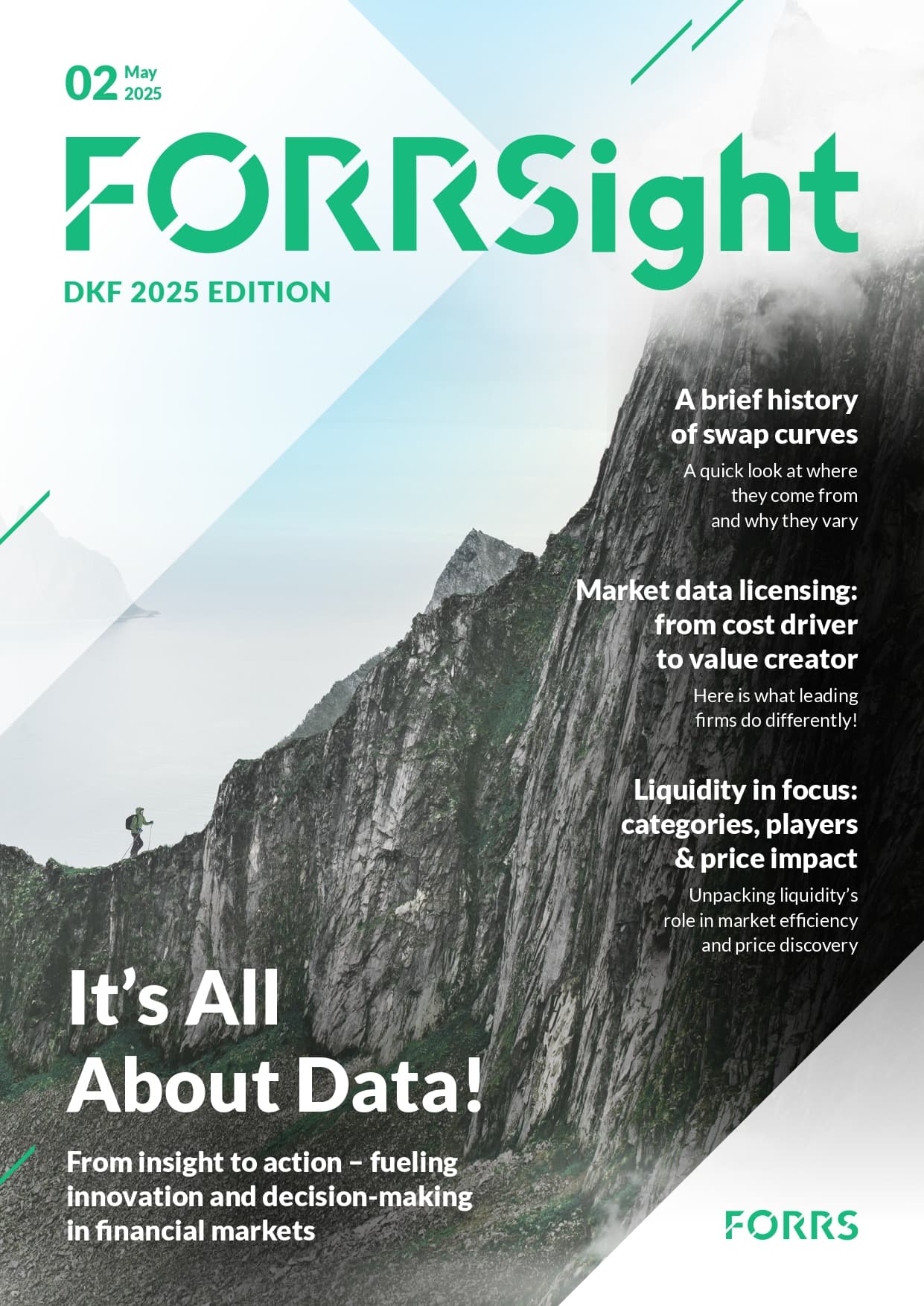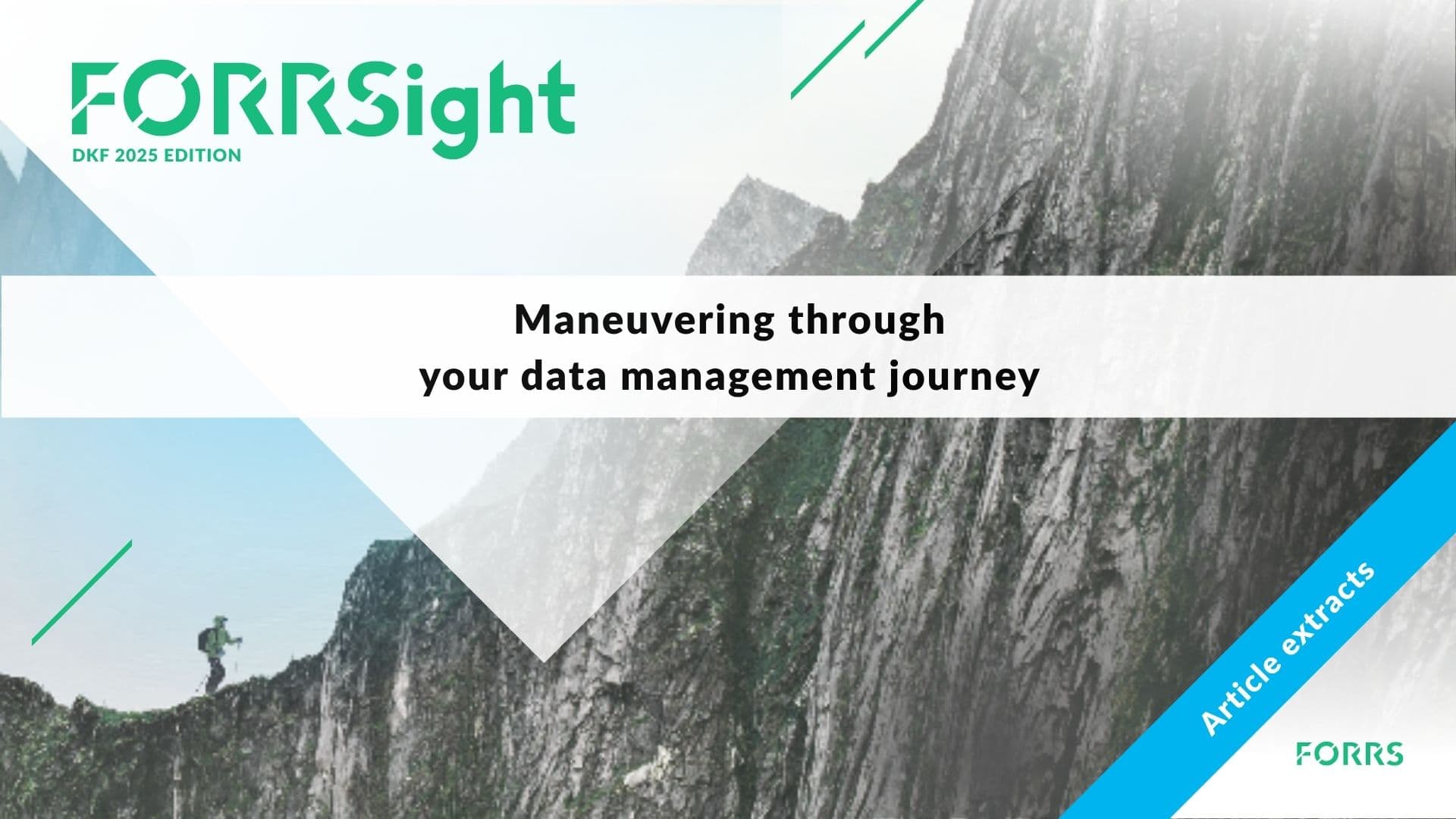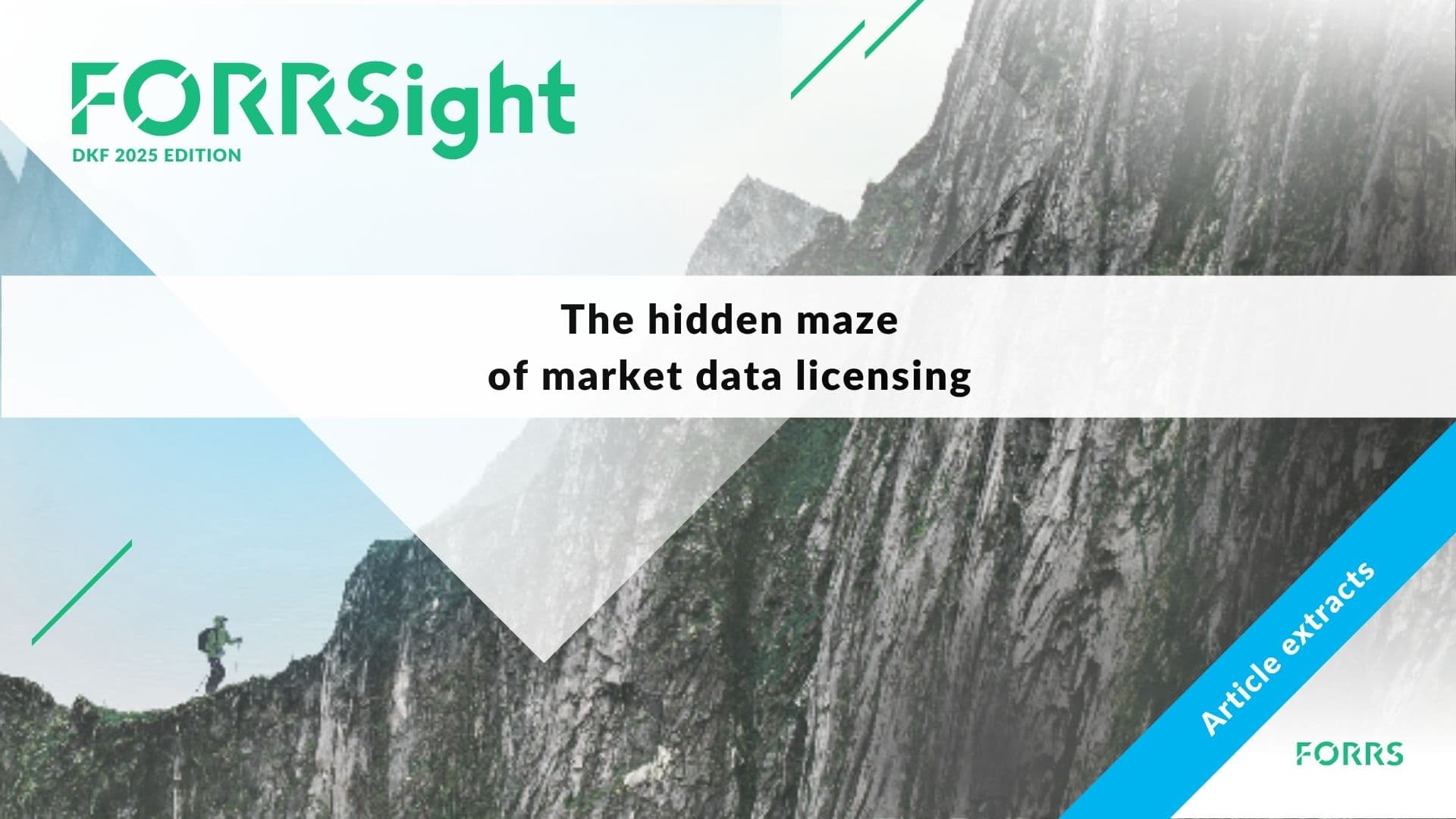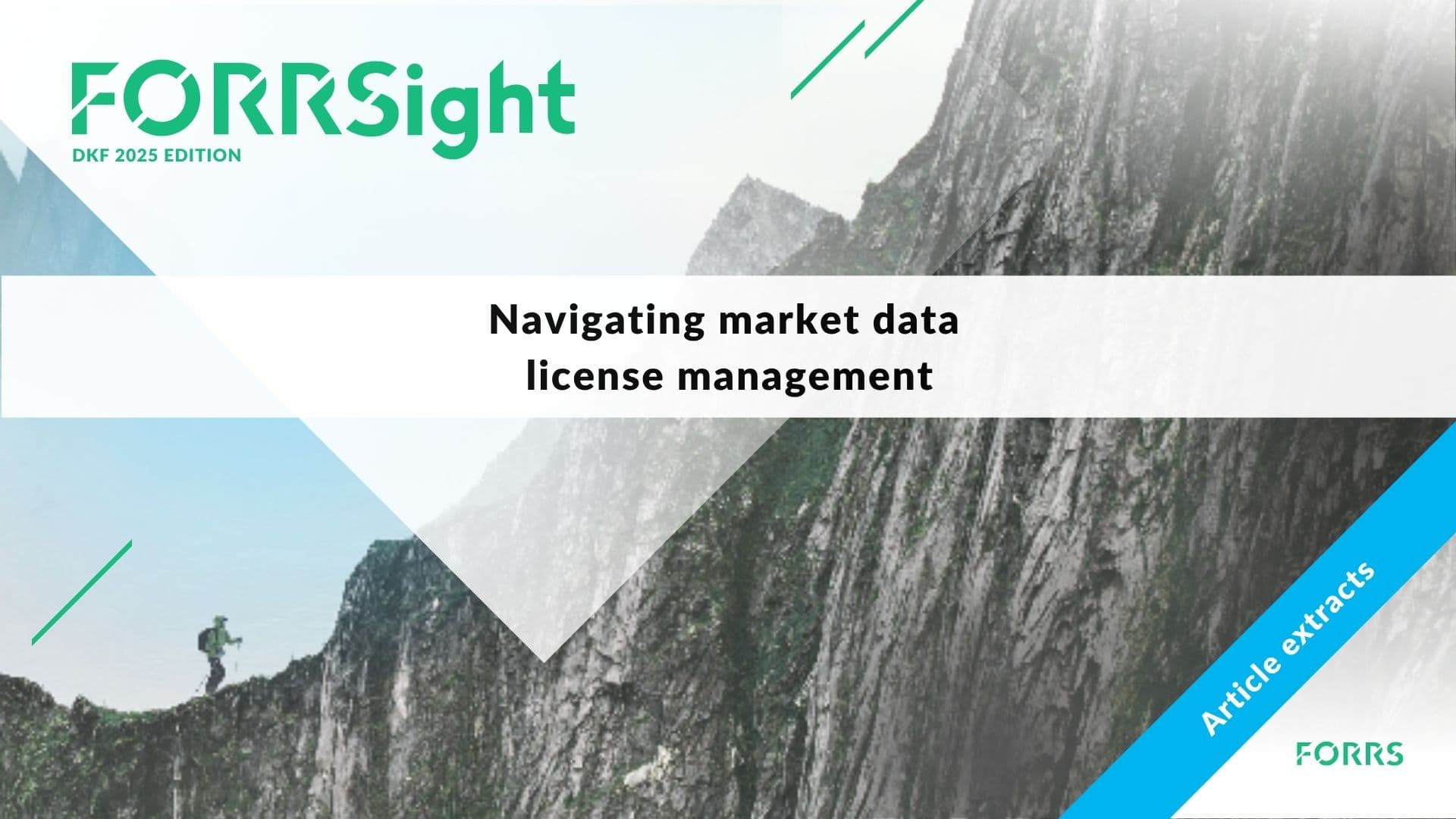14.07.2025 / 08:30
Managing Model and Data – from Prototyping to Operations
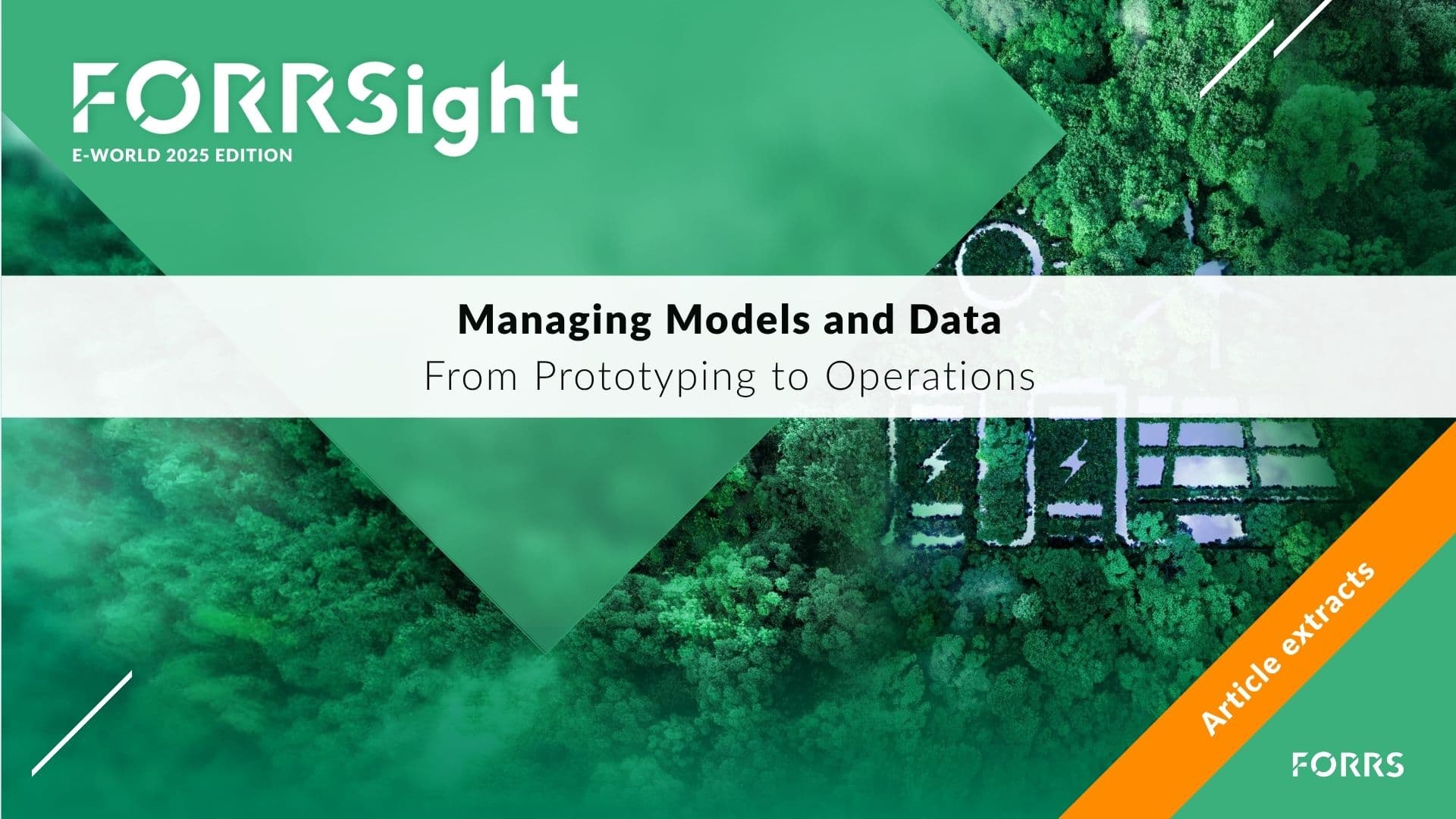
As energy trading undergoes rapid changes, managing data and models is more challenging than ever. Using automation for model execution and data handling is crucial for reducing operational risks and integrating new business models.
Rising challenges in energy markets
Energy markets are becoming more dynamic imposing challenges to all market participants, particularly for data and model management. While current technological developments dominate both areas, selecting suitable solutions is more complex than ever. The management of renewables and their technical requirements for the integration into the trading value chain further highlight this complexity, especially when the platforms in use are not fit-for-purpose. Decision-taking processes are becoming more automated, to adapt to fast-changing market conditions. However, this requires integrated and calculated data to remain consistent and reliably available at any time.
Increasing complexity in data and model management
Simultaneously, the number of onboarded data sources is growing, driven by expanding business and market activities, as well as by the availability of more data sources in the market. Therefore, data ingestion has become a significant ongoing effort in every professional trading environment. As these challenges within data management environments become more apparent, they must be efficiently addressed for organizations to remain competitive.
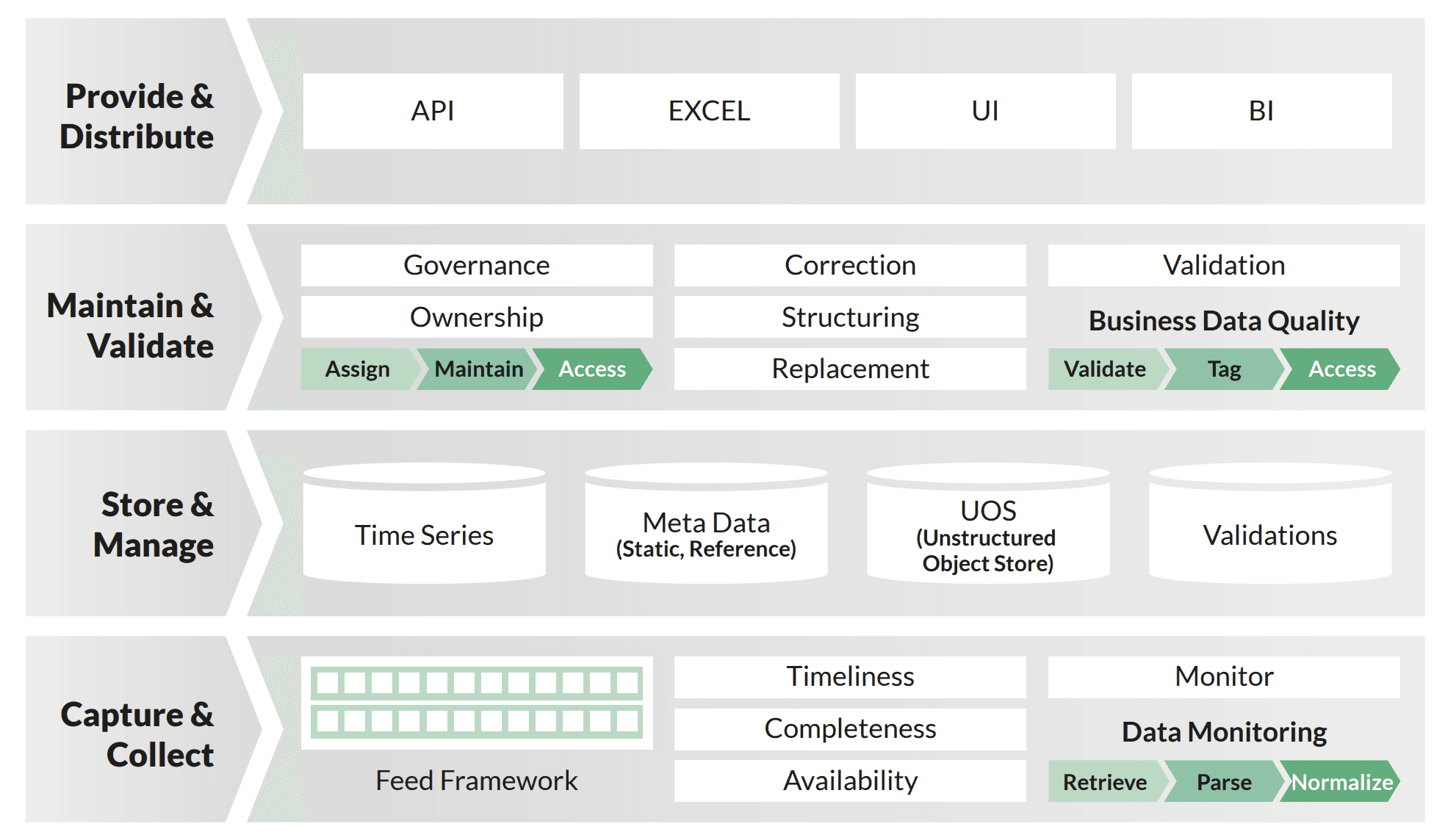
FORRS’s market data management capability architecture

Core challenges in energy data and market data management
Core challenges in energy data and market data management
Choosing the right technology solutions or platforms to manage data, especially market data of an energy trading organization, is a complex task. Many interfering aspects must be considered, and the demands of all departments within an organization need to be covered. Solution discussions often focus narrowly on specific technologies or database products, but the overall solution must support the targeted business processes, workflows, and should stay within planned budgets.
Technology choice questions and data content challenges are typically accompanied by additional complexity, particularly arising from data governance and data licensing issues. A lack of effective data governance is an internal cost driver, while poor data licensing practices represent an external operational risk, often leading to significant costs or even fines.
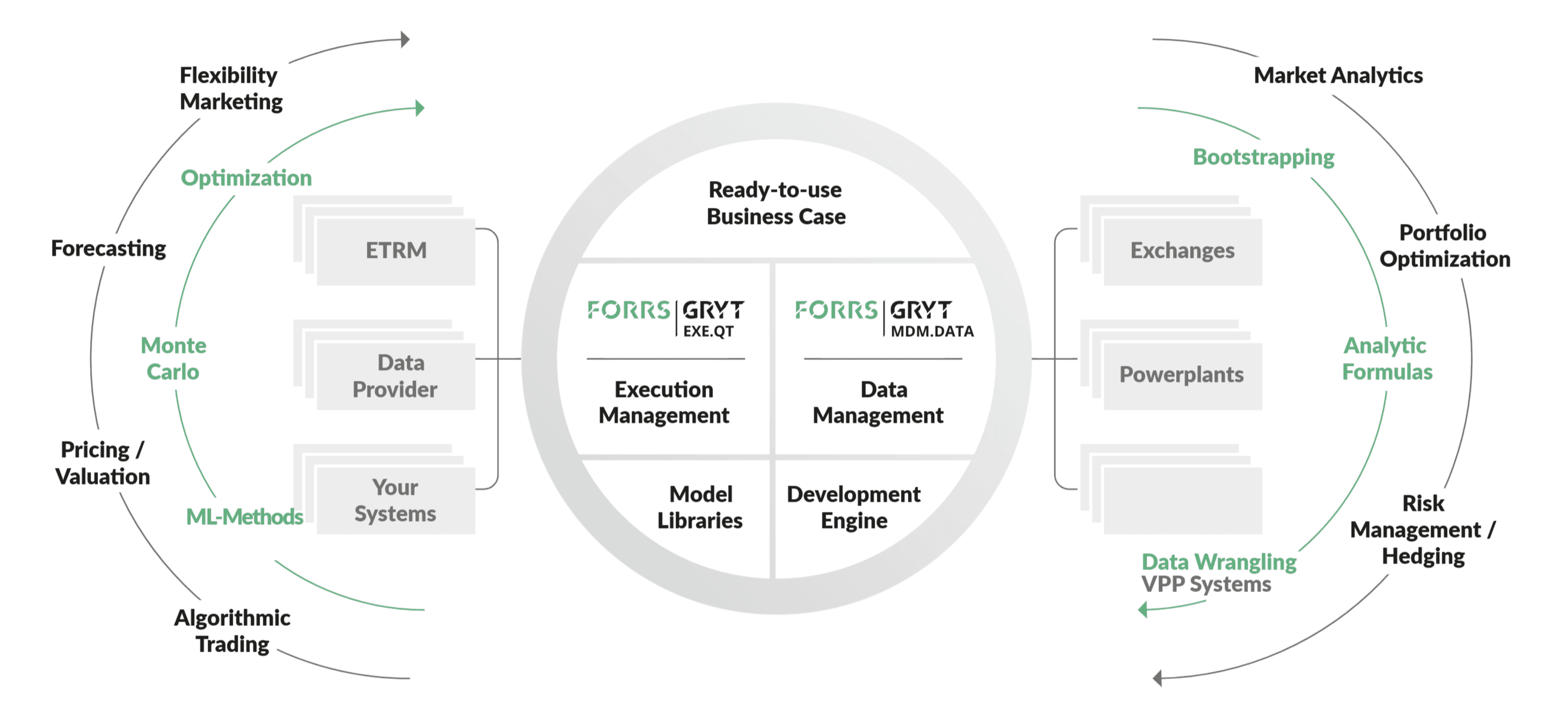
The GYRT Ecosystem specifically designed for individual modeling in energy trading and risk management
Capability architecture for effective solutions
One of the most effective methodologies used by successful organizations is to design solutions based on a capability architecture. This methodology allows business-related discussions to be separated from technological-focused decisions, ensuring that the solution correctly aligns with organizational needs and goals.
At FORRS, we developed this capability architecture and use it as a leading principle when planning both small or large data architectures and platforms.
Automating decisions and managing models
Due to the increasing demand for the integration of renewables into the deal lifecycle, continuous and automated decision-making has become essential. This automation is performed by models and even chains of models for energy trading companies. As the number of decisions to be automated grows, the need for test automation, and the operation of numerous models and workflows, grows similarly. Even smaller organizations can find themselves managing an unexpectedly high volume of productive models or scripts that often exceed 100 or more operative decision models.
To professionally manage data and models in such a magnitude across the complete organization, we have developed a comprehensive software suite called GRYT. By using GRYT, market participants can establish an efficient internal ecosystem and utilize a professional data and model platform. Operational stability is ensured through encapsulated prototyping environments and a clearly defined deployment pipeline that seamlessly transitions into production.
Conclusion
Effectively managing data and models is crucial, but choosing the right technology solutions requires careful consideration of numerous factors. Data governance and licensing issues add further complexity, impacting both internal costs and external operational risks. By adopting a capability architecture and focusing on automating decision-making through models, companies can create efficient ecosystems that support growth, operational stability, and resilience.


